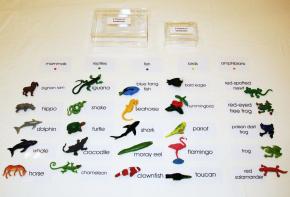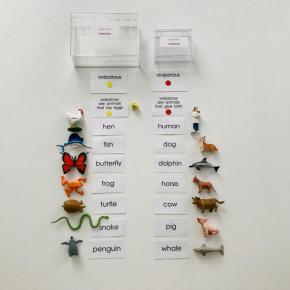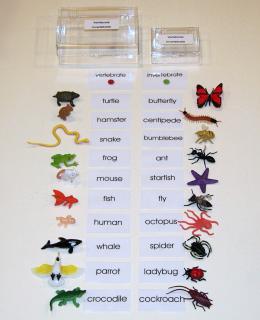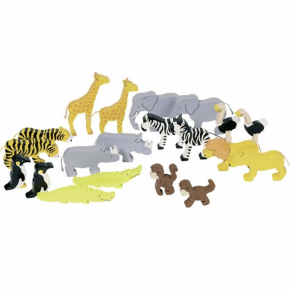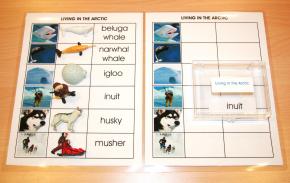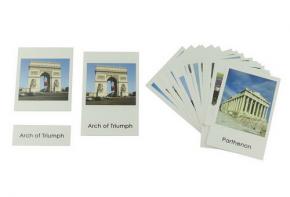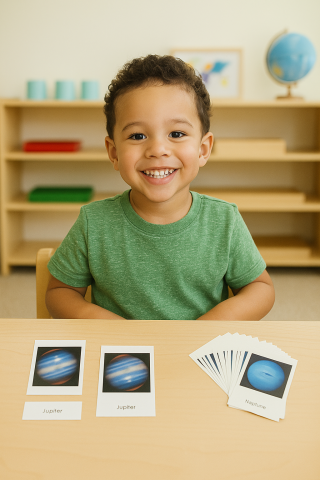
Montessori 3-part cards are a foundational tool in early language and classification work. They consist of three distinct elements: a picture card (image only), a word card (label only), and a control card (image and label together). This design not only supports vocabulary development and early reading but also promotes independence through self-correction.
To make this material even more sensorial and developmentally appropriate, we often add real objects — small miniatures that represent the images on the cards. These objects allow the child to begin the work at the most concrete level: holding and exploring a three-dimensional item. This matches the Montessori principle of moving from the concrete to the abstract.
Why do we add objects? Because they engage the senses: touch, weight, temperature, texture. A plastic zebra is not a real zebra, but it is much more real than a flat photo. For a young child in a sensitive period for order, language, and movement, the object provides an anchor — something they can classify, name, and manipulate.
Children may first explore the objects freely, naming what they know. Then, as they lay out the picture cards and read the labels, they can use the objects to reinforce the matching process. While the core work involves matching label to image, the object enriches attention, memory, and joyful engagement.
The child begins by carefully laying out all the picture cards on the table in an orderly row. These cards serve as the foundation of the work — visual, isolated representations of real-world objects. Then, the child takes the word cards one by one, sounding out the labels and placing each below the picture it matches. This process supports reading readiness and phonetic decoding. Once all labels are placed, the child checks their own work using the control cards, each of which combines the image and label. This final step offers immediate feedback and encourages autonomy in learning.
This format empowers the child to refine their perception, build literacy skills, and internalize the connection between spoken language, visual symbols, and real-world meaning.
It is important to emphasize that in the Montessori approach, learning is most effective when rooted in concrete experience. Therefore, the use of real, three-dimensional objects — rather than only flat images — is strongly encouraged. Handling and observing physical items engages multiple senses, deepening the child's understanding and memory. Pictures are already a level more abstract, and while valuable, they cannot replace the sensory richness of real materials.
This progression — from object to image to word — mirrors the child’s natural development from the concrete to the abstract. Through 3-part cards and related materials, children experience the joy of discovery, the confidence of self-correction, and the foundation for lifelong literacy.



